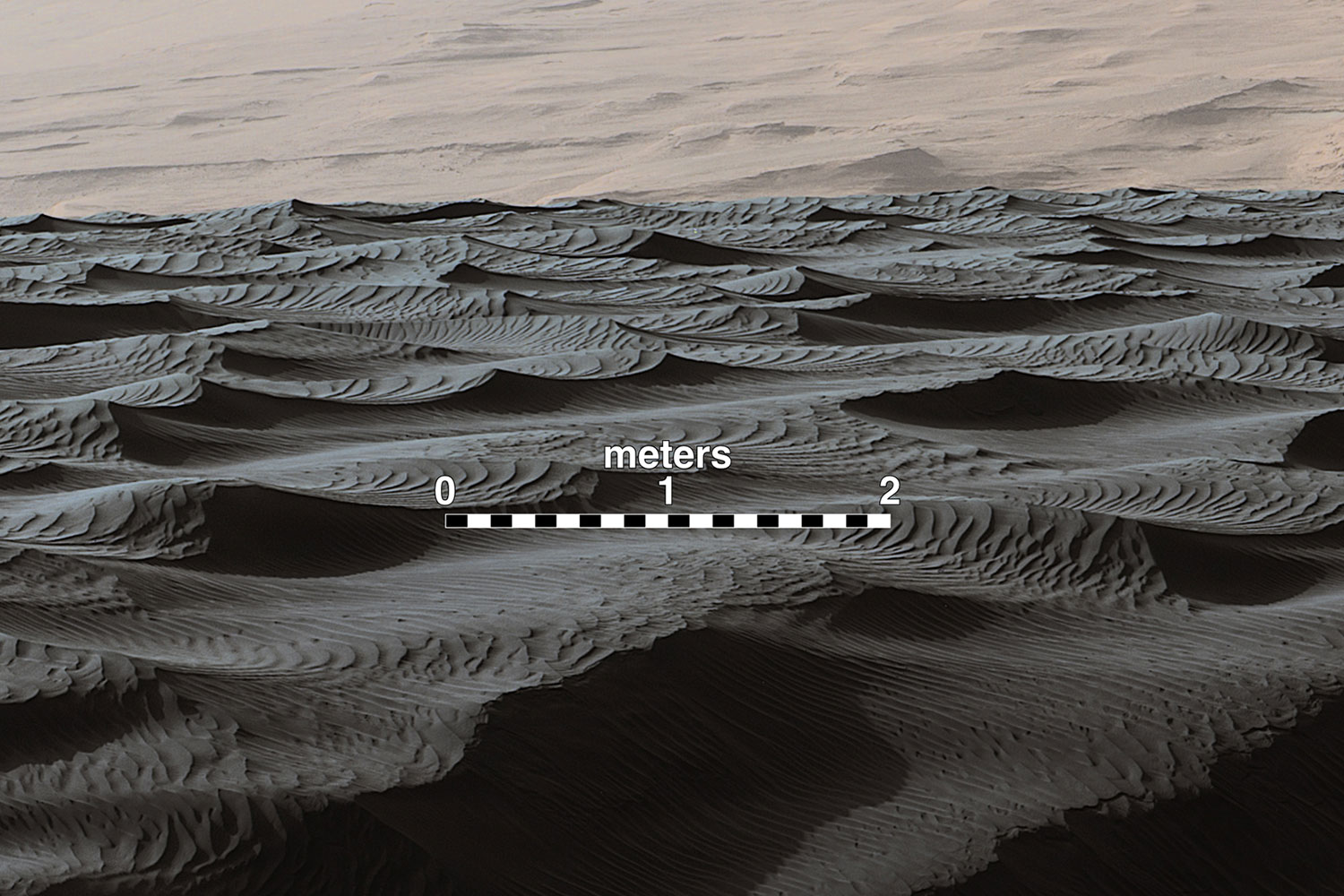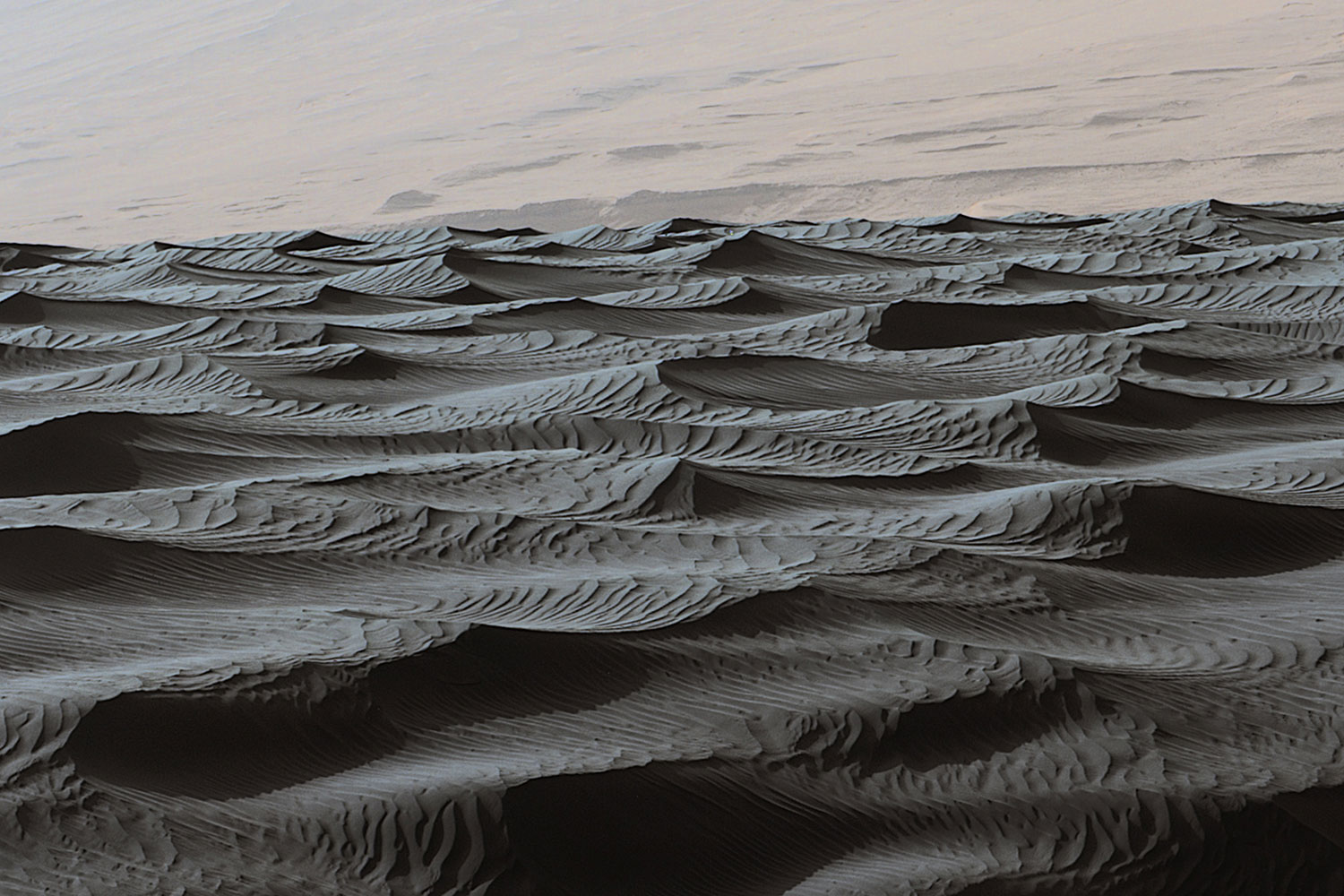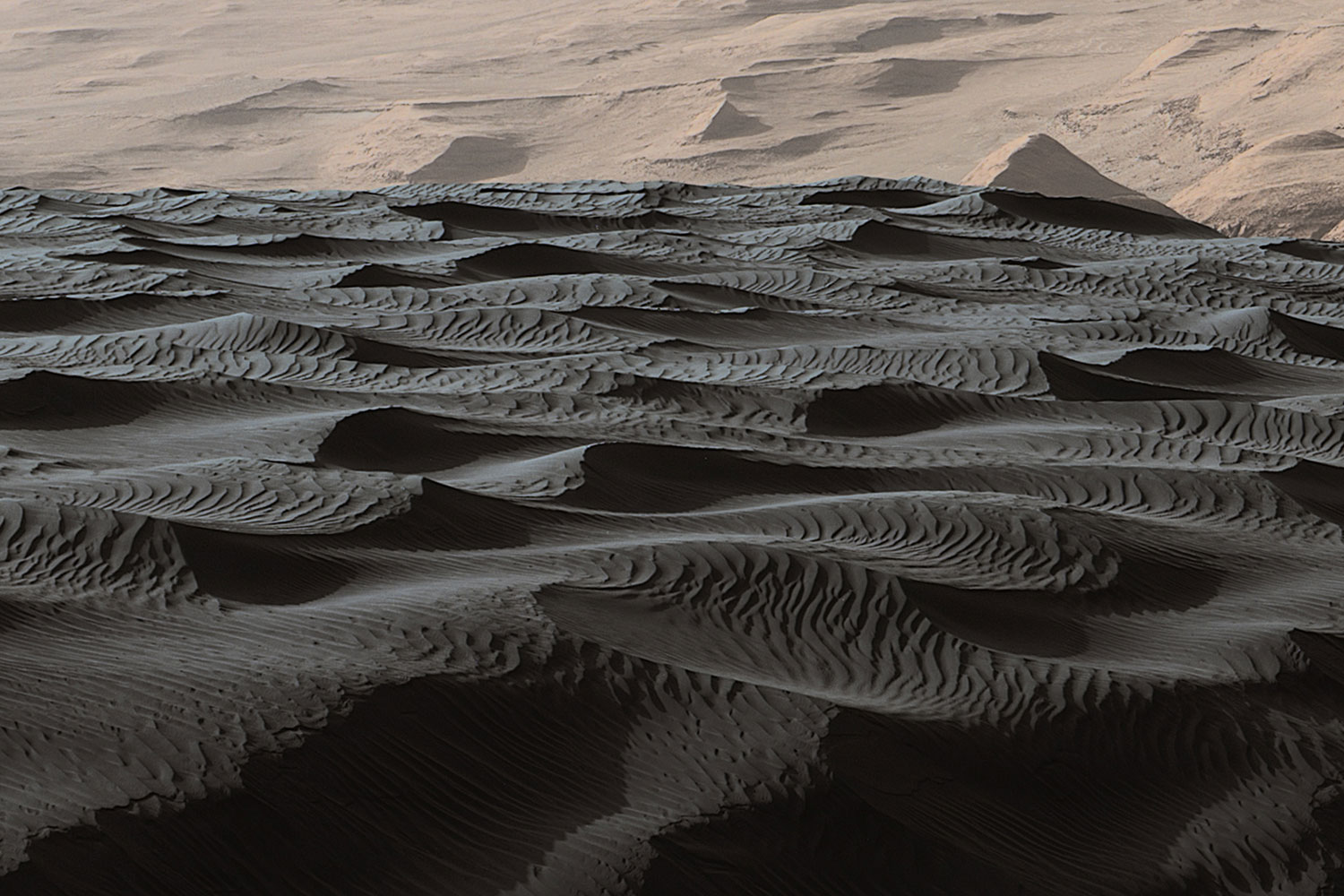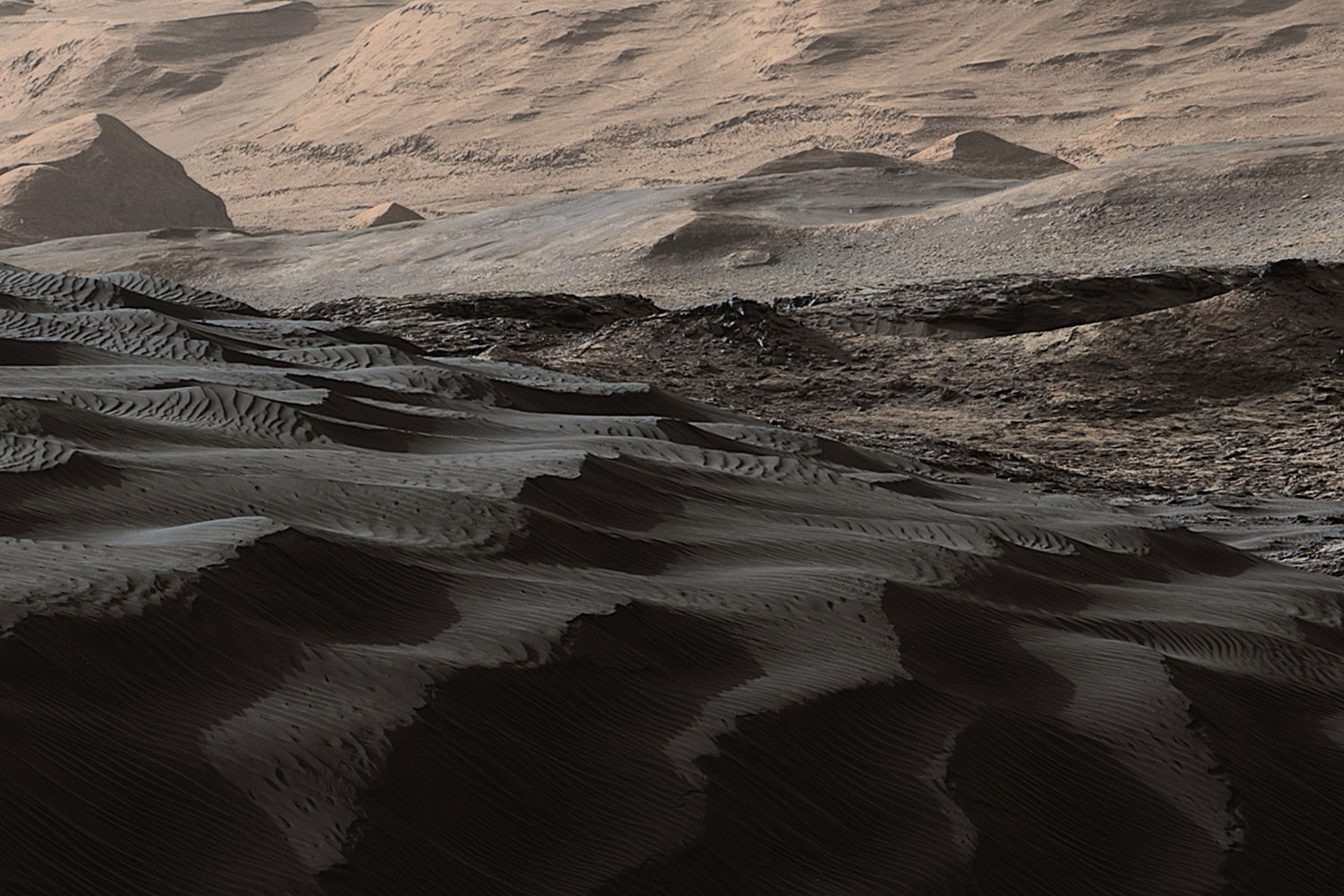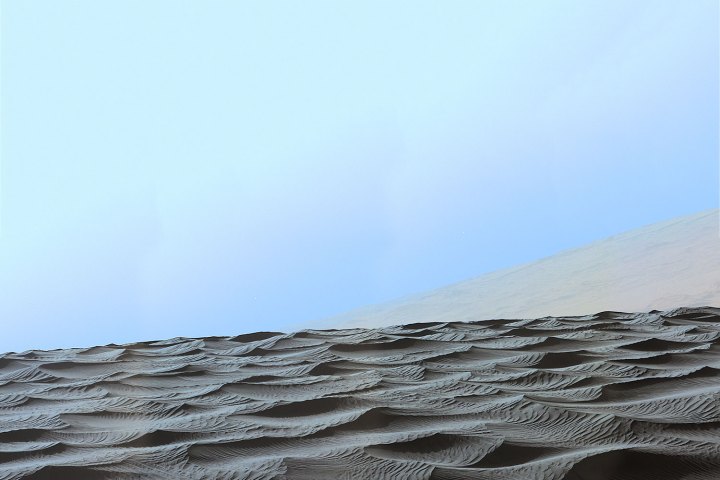
These mid-sized ripples are unlike those found here in Earth’s deserts, which can be classified as either small ripples (decimeter-scale) or large dunes (hundred-meter-scale). “On Mars, we found that there is an additional type of bedform of an intermediate scale,” the science team collaborator for the Curiosity mission, Matheiu Laporte, told Digital Trends. “These large Martian wind ripples have crest-to-crest spacings ranging between one and five meters, and they do not look like bedforms one would find in sand in Earth’s deserts.” Laporte and his team published there findings on Friday in the journal Science.
The Martian ripples weren’t unknown to the Curiosity team. “They are ubiquitous on the Red Planet, and are large enough to be resolved by HiRISE (the highest-resolution camera that is currently orbiting Mars),” Laporte says. But when Curiosity got up close and personal, the scientists were able to see the formations in finer details and appreciate how truly unique they are.
“Our first thought was that they look just like current-ripples that form along Earth’s riverbeds,” Laporte says. “One of the most important observations was that there are small, decimeter-scale ripples superimposed on the large ripples. The coexistence of two scales of superimposed active ripples called for two distinct formation mechanisms.”
On Earth, sand on riverbeds is dispersed differently than sand in deserts. Whereas water drags grains of sand due to the liquid’s high viscosity, air’s low viscosity means that desert sand hops on the surface and collides with other grains of sand, which hop and collide with more sand, creating small impact ripples.
“Now on Mars, the very low density of the Martian atmosphere actually enhances the relative efficiency of drag; such that both types of bedforms appear to form by the action of winds on a sandy surface,” Laporte explains. “We thus call the intermediate-scale bedforms ‘wind-drag ripples,’ by analogy to the fluid-drag ripples formed underwater on Earth, and by opposition to the impact-ripples found in Earth’s sandy deserts.”
The study of these mid-sized ripples is just the beginning of the discovery. Since the ripples’ size and spacing differ depending on atmospheric density, preserved wind-drag ripples in Martian rock can give clues to atmospheric conditions in the planet’s history. “This is very exciting because it is thought that Mars once had a thicker atmosphere,” Laporte says, “but the timing and duration of the decline of the Martian atmosphere remains an open question.”
Editors' Recommendations
- Mars helicopter Ingenuity hits 23rd flight, can’t be stopped
- Curiosity’s new selfie a reminder that the plucky rover is still busy on Mars
- Take a tour of Mars’ Gale Crater with the Curiosity rover
- The sound of science: Why audio is the next frontier in Mars exploration
- Why the Mars InSight lander is covering itself in dirt
